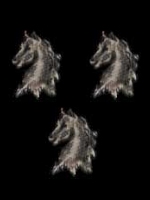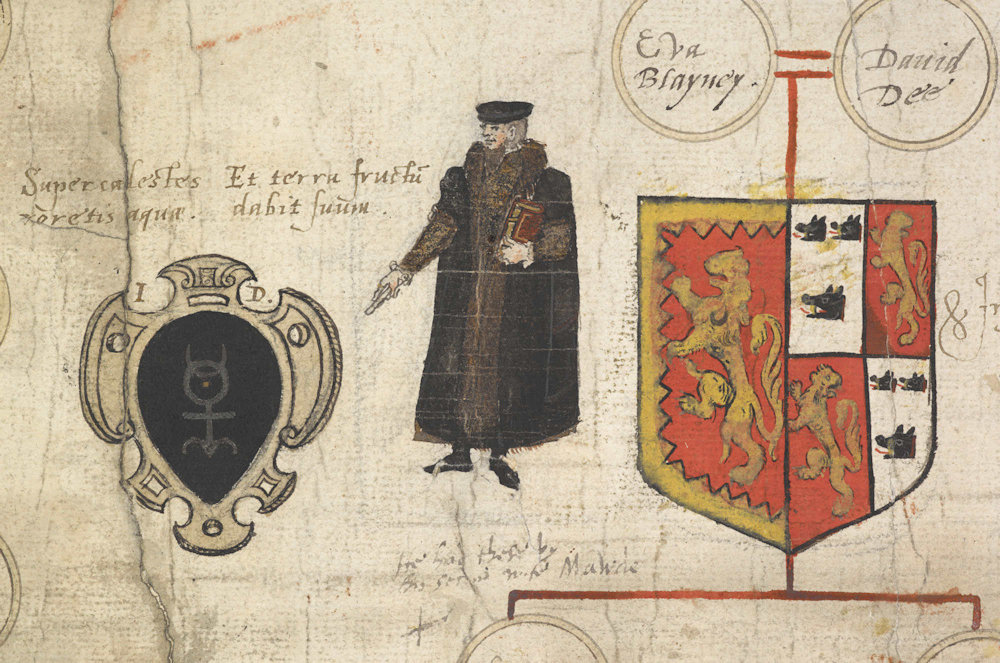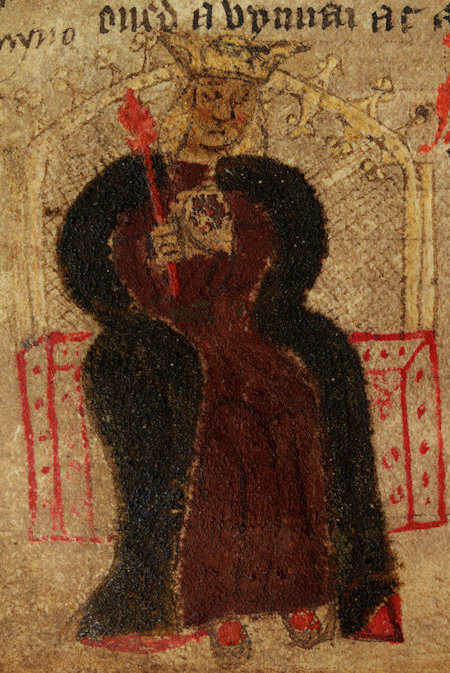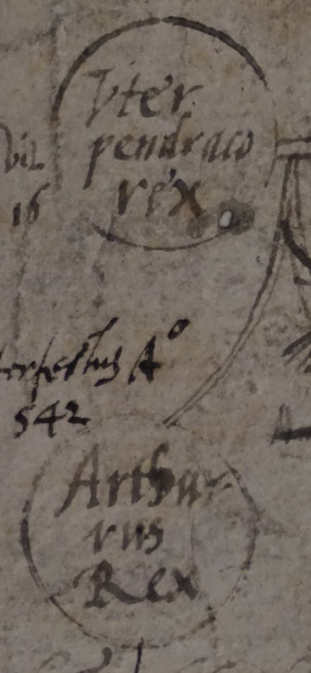Origin of the name "Blayney"
Was it a place name or a reference to Beli Mawr?
The name "Blayney", often shortened (?corrupted) to "Blaney" was traditionally assumed to be derived from "blaenau" (Welsh, meaning "uplands") although it could have derived from "Blaenaf" ("foremost" or "chief"), in either case taken as "top" or "Source"- See Evan.html
 Old Celtic coin |
 Arms of Brochfael Yagythrog |
The Latin genitive of Belenus is "Beleni" so Beleni / Blayney means "of [the dynasty of] Belenus". According to Kevin, this is also supported by the references in the 14th century poem The Triads of the Horses, which was popular at the court of Owain Glendower, of which Evan Blayney the first of the name, his distant cousin, was a political supporter (hence the inclusion of his name on the list of Burgesses of Welshpool who supported Glendower), in the time period in which the surname first began to be used independently by both the Montgomeryshire and Kinsham Blayney lines. The Triads of the Horses also clearly relates to the Coat of Arms of Brochfael Ysgythrog and subsequently on the various Blayney Coats of Arms.
The surname was used by various disparate lines which appear to be able to trace back to Belenus / Beleni Mawr, as on the genealogical line which John Dee, albeit that the top section of his pedigree is missing [1388] implies. Dr John Dee was a mathematician, astronomer, navigator, astrologer, teacher, occultist and alchemist but self styled "philosopher". He was court astronomer for, and advisor to, Queen Elizabeth I.
Kevin states that all lines shown on Dee's pedigree trace to Belenus/Beli Mawr.
John Dee's Scroll (Cotton Roll) [1385] shows his ancestors included Blayneys of both the Evesham and the Montgomeryshire lines
 John Dee in his Genealogical roll indicating his glyph (the Hieroglyphic Monad, explained in Monas Hieroglyphica, cleaned by me) while standing beside the combined Coat of Arms of Eva (Efa) Blayney and David (Dafydd) Dee (Ddu). The is the 3 boars' heads of the Evesham Blayneys combined with the Dinefwr lion of Dee's ancestral House of Dinefwr |
John Dee traces his Great Grandmother Eva Blayney to Hoellus (Hoell Blaene), the first ancestor of the Evesham Blayneys to take the name while tracing Eva's husband David (John's Great Grandfather) back to Welsh kings and princes such as Rhys ap Gruffudd, Cadwallader, Malgwyn and even possibly King Arthur! The three horse heads Coat of Arms is shown for ?Cadwallon (hard to read, son of Kaduan = Cadfan ap Iago) who is known for his defeat of Edwin of Northumbria in the Battle of Hatfield Chase. Cadwallon shown as the father of Cadwalader (Cadwaladr, King of Gwynedd), traditionally claimed as a Blayney ancester.
 King Beli Mawr |
 Kings Cadwallon & Cadwallader |
 Kings Authur & Uther |
The link to "Arthurus Rex" (King Arthur), shown as son of "Vter pendraco rex" (King Uther Pendragon) with "Igerna" (Igraine), is not drawn clearly but seems to indicate a possible son ?Rhun or Rhys. It is accepted that the tradition of Mordred being Arthur's son (unkowingly to his half-sister, Morgan le Fay) is "a modern fiction invention", but where is this Rhun (or Rhys)? Medieval Welsh tradition provides a few more children, mainly illegitimate i.e. outside his marriage to Gwenhwyfar (Guinevere). Arthur is claimed to have had some sort of relationship with Eleirch daughter of Iaen, which produced a son named Kyduan (Cydfan). Other reported sons were Amr (Amhar), Gwydre, Llacheu and Duran, although all appear to have died before Arthur. Another son was Loholt (aka Lohot, Ilinot or Elinot) by Guinevere or illegitimately by Lyzianor (aka Lyzianor) while Thomas Malory apparently renamed him as Borre (aka Bohart, Boarte). Later stories add a further son, namely Tom (in Richard Johnson's 16th-century romance Tom a Lincoln, with grandsons referred to only as the Black Knight and Faerie Knight. Some stories add daughters.
The closest I could find was Rhun Hir ap Maelgwn (Rhûn) son of Maelgwn Gwynedd, who was "the fourth king of all Britain after Arthur" (according to the Tysilio's "Chronicle of the Kings of Britain" [1384]). Rhûn was King of (just) Gwynedd (reigned ~547 - ~586).
So the King Arthur inclusion is likely to be a Scholarly embelishment as Scholars of the day were in need of patronage, and it never hurt to be able to claim kinship to royalty, particularly an implied link to King Arthur, and better still show the royal patron was also a King Arthur descendant.
Descent from Beli Mawr to Blayney ancestor Vortigern Vorteneu
Vortigern Vorteneu (Gwrtheneu) "the Thin", High King of Britain is a direct ancestor of the Blayneys and his ancestry can be traced back to Beli Mawr "the Great" High King of Britain in ~110BC.